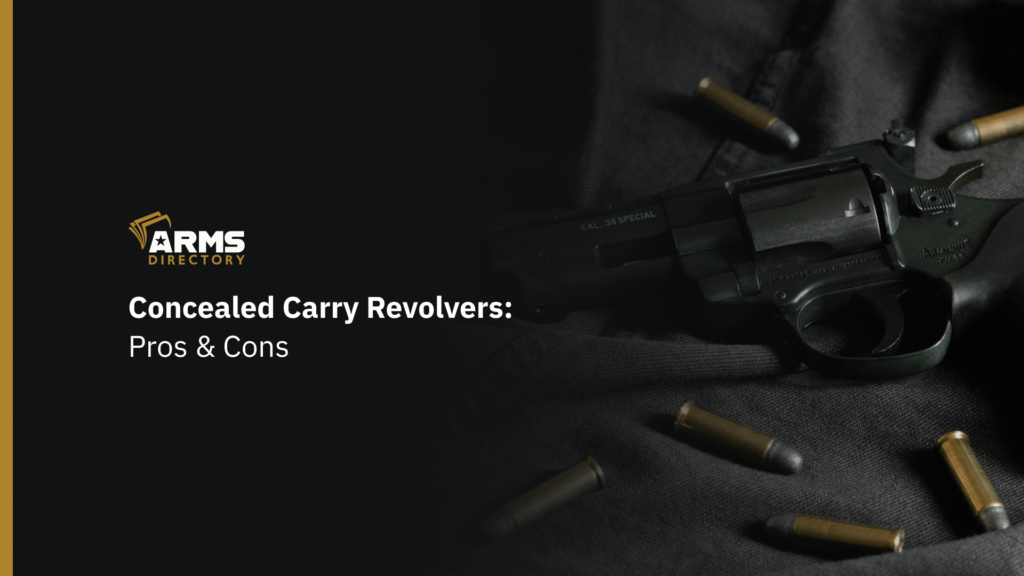
Concealed Carry Revolvers: Pros & Cons
When you think of “revolver,” you probably imagine the Old West. Tough cowboys riding through dusty towns, guns blazing in showdowns under the scorching sun. Basically, a scene from an old-fashioned Western action movie, with bullets flying everywhere.
But are revolvers really so outdated? Not at all! While semi-automatic pistols pretty much rule the self-defense gun market, revolvers are still going strong, and many people prefer concealed carry revolvers over semi-automatic pistols. Let’s see why.
What Is Considered Concealed Carry?
Concealed carry is when you carry a firearm on your body, but it’s not widely visible to the public. Usually, it’s a smallish handgun, tucked safely away in a holster, pocket, or under your clothes.
This is a Second Amendment Right of the U.S. Constitution, which guarantees American citizens the right to keep and bear arms. All states are required to allow the concealed carry of a handgun, either with or without a permit.
Commonly used firearms for concealed carry are:
- Semi-automatic pistols: These guns use magazines to store cartridges.
- Revolvers: They feature a revolving cylinder that houses the ammunition.
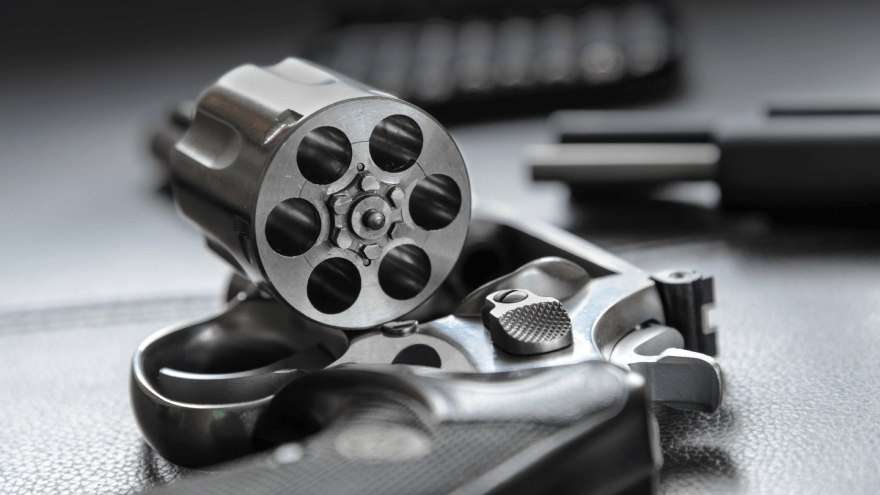
Differences Between a Revolver and Semi-Automatic Pistol
Choosing between the revolver and semi-automatic pistol depends on what fits your needs and preferences best. It cannot be said that one is better than the other.
Let’s go through the main differences:
- Mechanism: Revolvers are easy to use – just load bullets into the cylinder, close it and shoot. Semi-autos require more steps. You need to rack the slide, load the magazine, and disengage the safety.
- Capacity: Revolvers usually hold 5-8 rounds,semi-autos have higher capacity (10+ rounds).
- Reload: Reloading is slower because you need to insert each cartridge individually, while semi-autos allow for quick reloads thanks to detachable magazines.
- Trigger pull: These guns often have a heavier trigger pull than semi-autos. Lighter pull means faster follow-up shots and less recoil.
Pros of Concealed Carry Revolvers
Revolvers have stood the test of time for several good reasons:
Simplicity and Reliability
The beauty of a revolver is its simplicity – no slide-racking or complex disassembly. It has just a few parts: a trigger, a hammer, and a cylinder. No magazine. This makes it even more reliable because moving parts in any system are potential points of failure.
Loading a revolver should be easy – you swing out the cylinder, pop in the bullets, swing it back, aim, and shoot. If you find the trigger pull too long, just pull back the hammer first. When it’s empty, swing out the cylinder, replace the spent cartridges, and you’re good to go.
Cleaning is easy too; a quick pass with a clean rag and the proper tool should do the job – no need to take it apart.
Stopping Power
Although the placement of a bullet matters more than how powerful it is, the size and strength of the bullet are still crucial. A bigger bullet usually does more damage. For instance, a .357 Magnum packs more punch than a nine-millimeter.
While just the sight of a gun will most likely scare off most threats, a determined attacker might not be stopped, nor will just one shot suffice. Plus, revolvers can shoot different kinds of bullets, providing you with the flexibility to start simple and switch to more powerful ones, if needed.
Revolvers have streamlined their designs over the years which has also facilitated easy drawing during crucial moments. Their compact size accommodates various carry methods, resulting in comfort and discretion for the carrier.
Cons of Concealed Carrying Revolvers
There are a few drawbacks to consider:
Slow Reloading
Reloading a revolver can take longer compared to a semi-automatic pistol. With revolvers, you usually have to load each round individually, while with semi-autos you can quickly switch out magazines. They also tend to hold fewer rounds, so you may find yourself reloading more often during prolonged use.
Heavy Trigger Pulls
Revolvers often have a heavier trigger pull, especially in double-action mode where pulling the trigger both cocks and releases the hammer. This heavier pull can require more effort to shoot the gun, potentially impacting your shot speed and accuracy, especially if you have weaker hands or less experience.
Short Sight Radius
The distance between the front and rear sights is typically shorter than on a semi-automatic pistol. This shorter sight radius can make aiming more challenging, especially at longer distances. Small misalignments can lead to larger deviations in where your bullets hit the target.
Weight and Bulk
Revolvers can be heavy and bulky, especially those designed for larger calibers. This added weight and size can make carrying them less comfortable and more challenging, especially for longer periods of time.
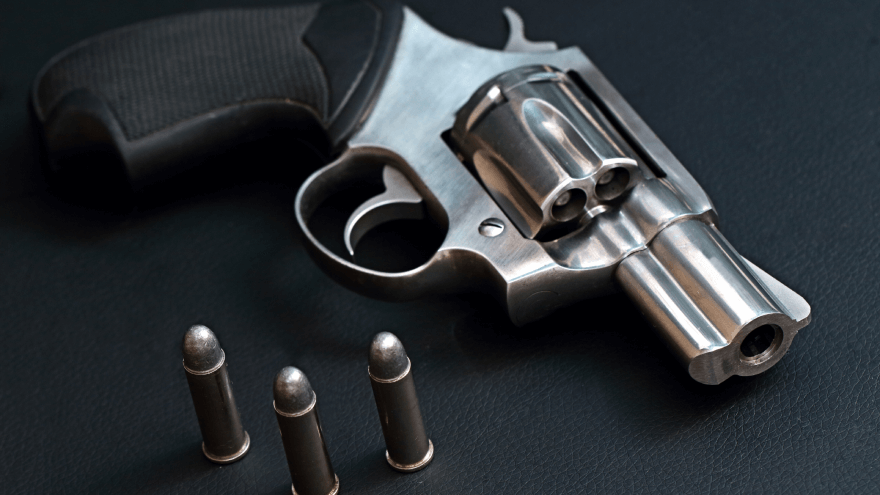
Choosing a Revolver for Concealed Carry: Tips for Making the Right Choice
Let’s look into the key factors to help you choose wisely:
- Carry method: Pick a revolver that suits the most restrictive carry method for you, such as pocket or ankle carry. Ensure your chosen revolver fits comfortably and securely.
- Size and weight: Opt for a smaller, lighter handgun for easier concealment and carrying. However, remember that these may have more recoil.
- Recoil management: Be honest about how much recoil you can handle comfortably. Choose a caliber that balances stopping power with manageable recoil.
- Caliber choice: Like above, decide on a caliber that provides adequate stopping power. Popular choices like the .38 Special and .357 Magnum offer a good balance between power and controllability.
- Corrosion resistance: Look for revolvers made from materials like stainless steel or polymer that offer corrosion resistance, especially if you plan to pocket carry in humid conditions. This helps maintain the revolver’s durability over time.
- Hammer style: Consider a revolver with a shrouded or internal hammer to prevent snagging during the draw.
- Capacity: Although revolvers typically hold fewer rounds than semi-automatics your choice should have enough rounds for your comfort and intended use.
- Trigger quality: A quality trigger enhances shooting accuracy and confidence. Test out different models to find one that feels right for you.
- Ergonomics and grip: The handgun should fit in your hand comfortably and allow for a secure grip.
- Reliability and maintenance: Opt for a revolver known for its reliability and ease of maintenance. While revolvers are generally low-maintenance, regular care is still essential to keep your firearm in top condition for when you need it most.
- Carry position: Try out different carry positions such as the appendix, strong side, or pocket carry to find the most comfortable and accessible option for you.
- Dress appropriately: Concealing your handgun effectively also depends on what you are wearing. Invest in a sturdy gun belt to support the weight of your revolver and holster, ensuring everything stays in place securely.
A Few Words on How to Choose a Revolver Holster
When picking out a holster, here are some tips to keep in mind:
- Fit and comfort: Look for a holster that fits your revolver securely and feels comfortable against your body.
- Concealment: Whatever you choose should hide your firearm discreetly under your clothing to maintain a low profile.
- Accessibility: You should be able to access your firearm smoothly and efficiently.
- Material: Consider the material. Leather holsters are durable and offer a classic look, while Kydex or nylon holsters are lightweight and easier to maintain.
- Adjustability: Look for a holster with adjustable retention and ride height. This allows you to customize the fit according to your preferences and body shape.
- Overall quality: Invest in a good-quality holster from a reputable manufacturer. A well-made holster will last longer, provide better functionality, and offer improved comfort for everyday carry.
- Try before buying: If possible, try out different holsters with your revolver to see which one feels the most comfortable and suits your carry style best.
Wrap Up
In summary, concealed carry revolvers continue to be a practical option given their straightforwardness of operation, dependable performance, and effective stopping capabilities. When it comes to safeguarding yourself, this handgun stands out as a reliable and powerful tool that can instill confidence in any shooter.

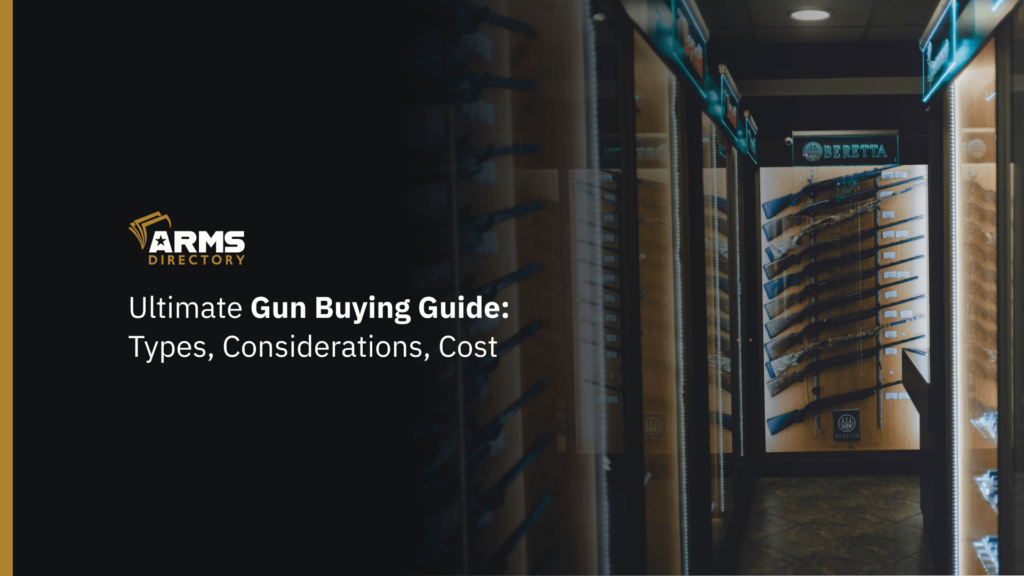
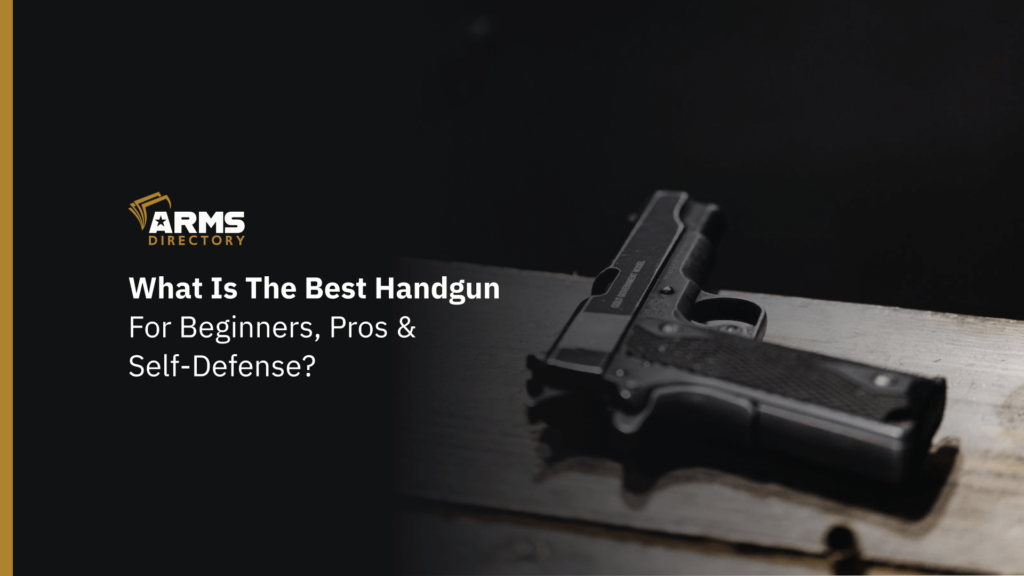
![The Ultimate Shooting Accessories for Every Weapon [A 2023 Beginners Guide]](https://vault.armsdirectory.com/wp-content/uploads/2023/08/30071223/The-Ultimate-Shooting-Accessories-for-Every-Weapon-A-2023-Beginners-Guide-1024x576.png)
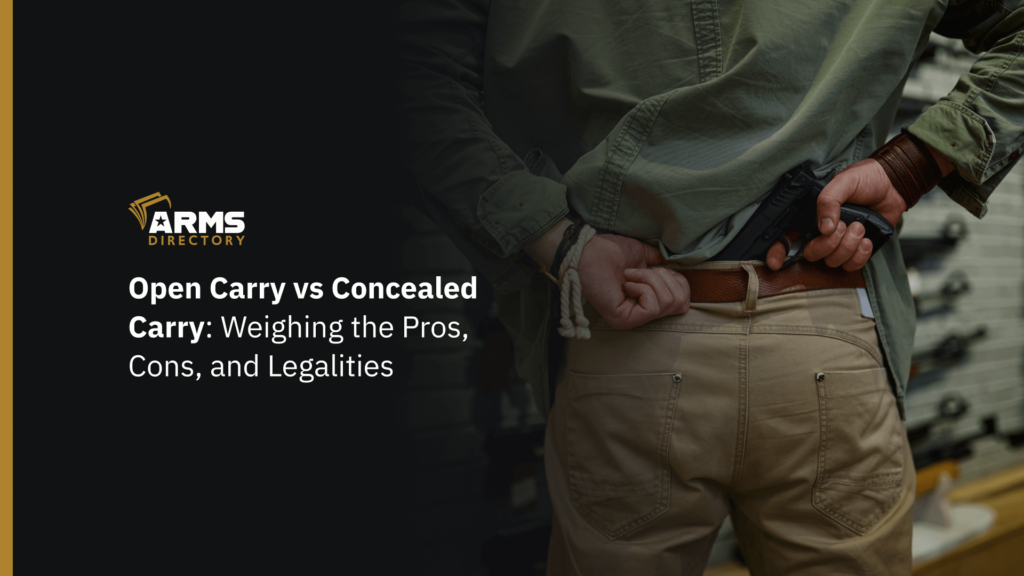
![Gun Registration Requirements by State [What You Need to Know]](https://vault.armsdirectory.com/wp-content/uploads/2023/10/27073220/Gun-Registration-Requirements-by-State-What-You-Need-to-Know-1024x576.png)